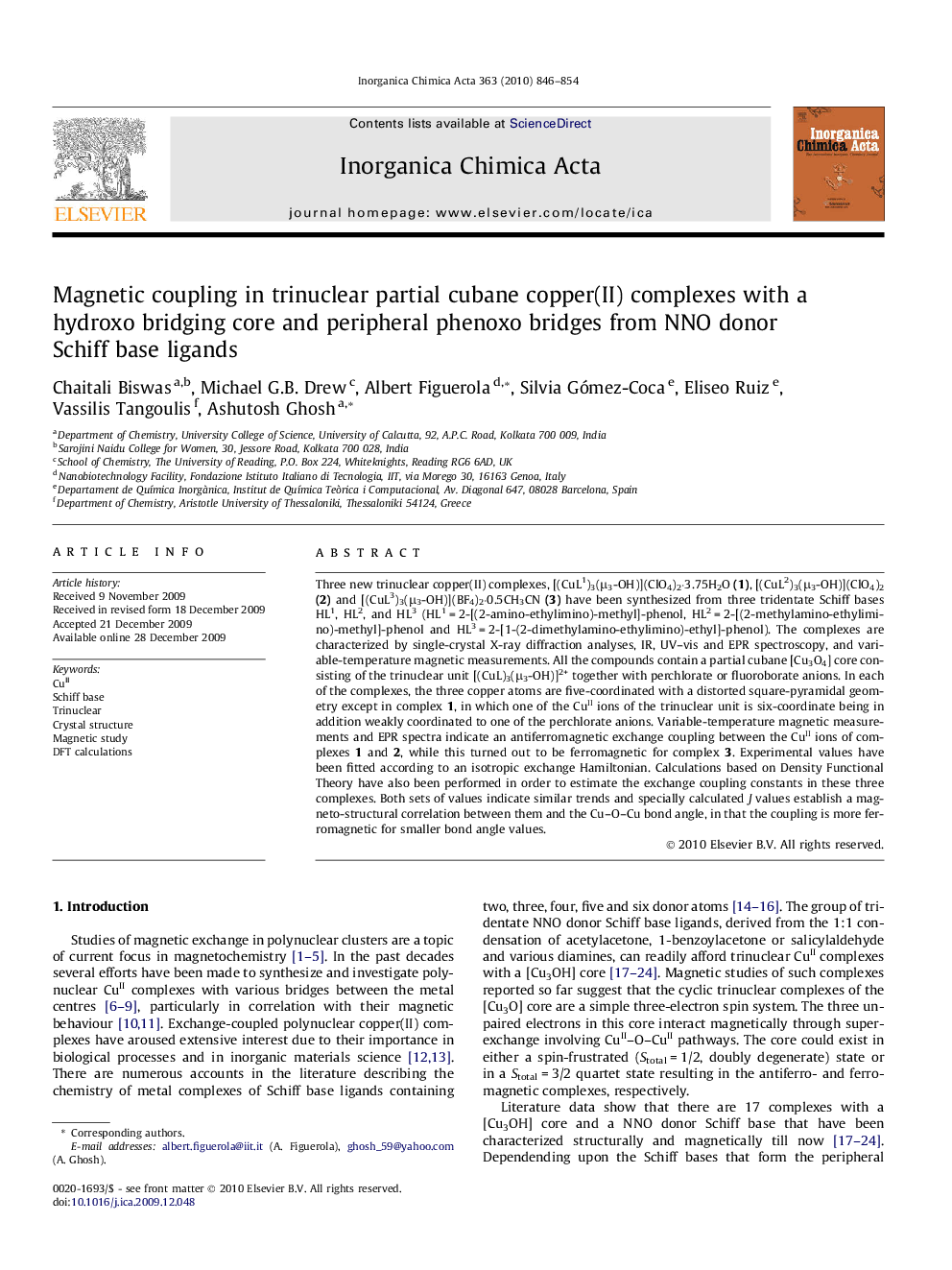| کد مقاله | کد نشریه | سال انتشار | مقاله انگلیسی | نسخه تمام متن |
|---|---|---|---|---|
| 1309300 | 975203 | 2010 | 9 صفحه PDF | دانلود رایگان |

Three new trinuclear copper(II) complexes, [(CuL1)3(μ3-OH)](ClO4)2·3.75H2O (1), [(CuL2)3(μ3-OH)](ClO4)2(2) and [(CuL3)3(μ3-OH)](BF4)2·0.5CH3CN (3) have been synthesized from three tridentate Schiff bases HL1, HL2, and HL3 (HL1 = 2-[(2-amino-ethylimino)-methyl]-phenol, HL2 = 2-[(2-methylamino-ethylimino)-methyl]-phenol and HL3 = 2-[1-(2-dimethylamino-ethylimino)-ethyl]-phenol). The complexes are characterized by single-crystal X-ray diffraction analyses, IR, UV–vis and EPR spectroscopy, and variable-temperature magnetic measurements. All the compounds contain a partial cubane [Cu3O4] core consisting of the trinuclear unit [(CuL)3(μ3-OH)]2+ together with perchlorate or fluoroborate anions. In each of the complexes, the three copper atoms are five-coordinated with a distorted square-pyramidal geometry except in complex 1, in which one of the CuII ions of the trinuclear unit is six-coordinate being in addition weakly coordinated to one of the perchlorate anions. Variable-temperature magnetic measurements and EPR spectra indicate an antiferromagnetic exchange coupling between the CuII ions of complexes 1 and 2, while this turned out to be ferromagnetic for complex 3. Experimental values have been fitted according to an isotropic exchange Hamiltonian. Calculations based on Density Functional Theory have also been performed in order to estimate the exchange coupling constants in these three complexes. Both sets of values indicate similar trends and specially calculated J values establish a magneto-structural correlation between them and the Cu–O–Cu bond angle, in that the coupling is more ferromagnetic for smaller bond angle values.
Among the three Cu(II) complexes of phenol-derived Schiff bases with partial cubane [Cu3O4] core structures, two are antiferromagnetic while the third one is ferromagnetic. Previously established magneto-structural correlations show an overall agreement with experimental analysis and DFT calculations.Figure optionsDownload as PowerPoint slide
Journal: Inorganica Chimica Acta - Volume 363, Issue 5, 22 March 2010, Pages 846–854